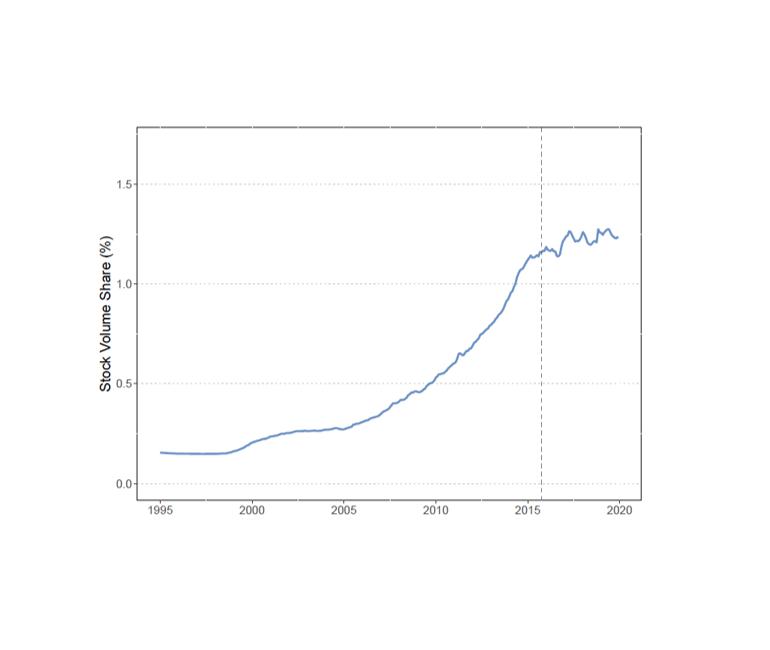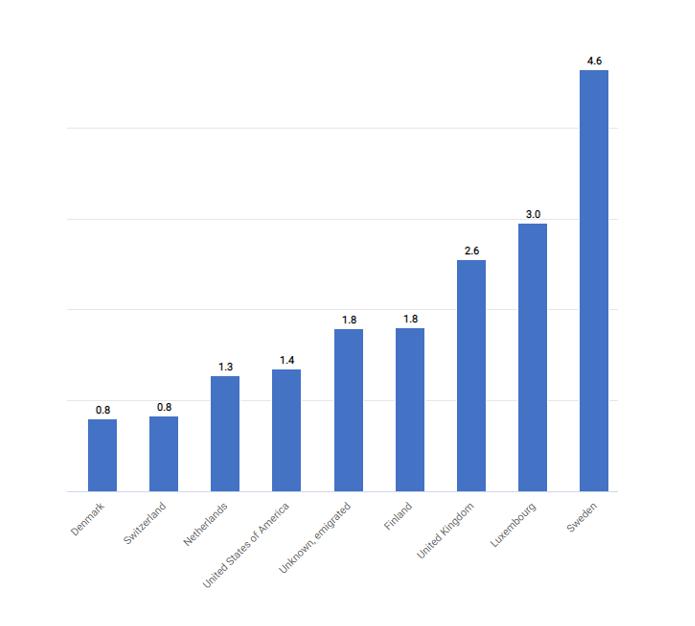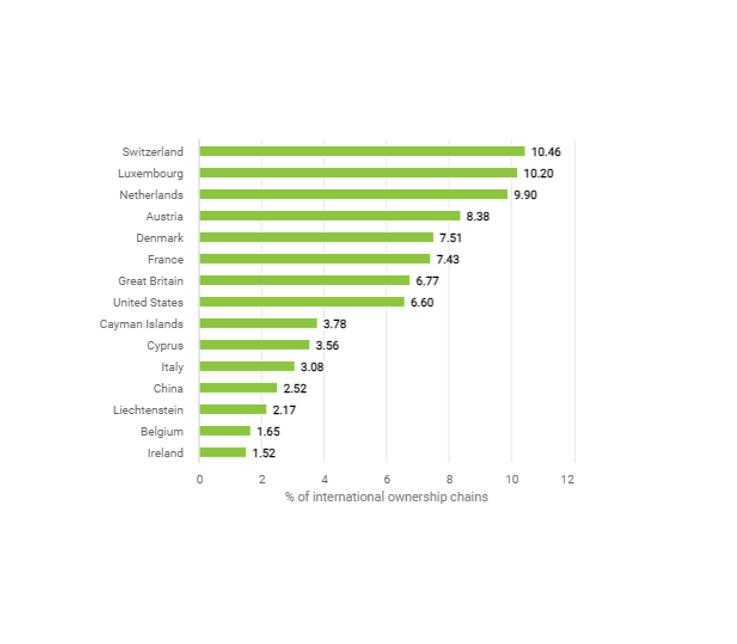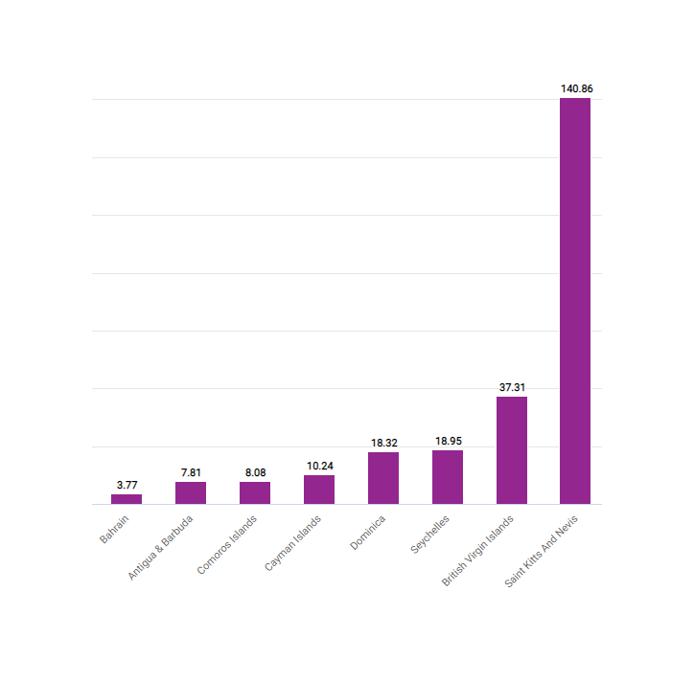Homes incorporated: Offshore ownership of real estate in the U.K.
The impact of beneficial ownership transparency on illicit purchases of U.S. property
The lack of transparency in U.S. real estate transactions has been one of the main reasons for the high risk of money laundering in this sector. Until 2016, the use of a shell company could grant property buyers a reasonable degree of anonymity if the purchase was made in cash, as none of the parties in the transaction would be subject to reporting requirements. This loophole led to concerns that corporate all-cash purchases were becoming an attractive means of investing in U.S. property while maintaining anonymity. Specifically, cash purchases by companies became more common in the luxury property market. From 2010 to 2015, corporate all-cash buyers seem to dominate both the very low and the very high end of the property market. However, the 2016 introduction of several transparency policies, called Geographic Targeting Orders (GTOs), forced corporate buyers making all-cash purchases to report the company’s ultimate beneficial owner.
This paper estimates the effect of beneficial ownership transparency (the introduction of GTOs) on the U.S. real estate market. Under the assumption that an increased probability of detection should result in a deterrence effect, the introduction of GTOs should reduce the number of corporate all-cash purchases in the targeted markets. The authors test this using data on millions of real estate transactions over 2014–2019.
The analysis shows that across all targeted counties, GTOs had no aggregate effect on the number or volume of all-cash corporate transactions. Using a variety of estimation techniques, the authors see little evidence that money launderers were effectively deterred by the policy to decrease their purchases of high-end properties in the U.S. Moreover, they find little evidence of attempts to evade the program. All in all, the authors are unable to observe supporting evidence across several dimensions that corporate buying behavior changed due to GTOs.
Cash purchases by companies have become more common in the luxury property market
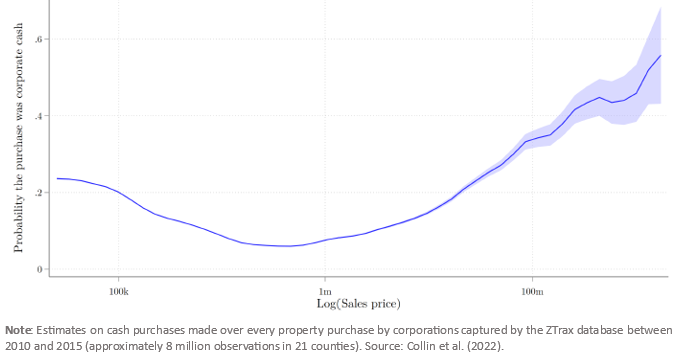
Key results
- From 2010 to 2015, cash purchases by companies have become more common in the luxury property market.
- There is little evidence that Geographic Targeting Orders (GTOs), aimed at providing beneficial ownership transparency, reduced the amount of money being invested into the U.S. real estate market through the corporate all-cash route, as well as little evidence of attempts to evade the program.
Data
To estimate the causal effect of beneficial ownership transparency on property purchases, the authors combined data on 39 million real estate transactions over the period 2014–2019 through Zillow’s Transaction and Assessment Dataset (ZTrax). This database covers nearly all residential real estate transactions in the United States over the past decade. While it is rich in information on real estate transactions, 99.5% of companies in the ZTrax dataset report U.S. addresses when completing such activities, with no other information available about their foreign ties or ownership in state business registries.
Methodology
Several quantitative methods are applied in the paper to estimate the influence of increased beneficial ownership transparency on illicit purchases of U.S. property. The authors use a staggered difference-in-differences (DiD) design to investigate whether the increased transparency led market participants to adjust their behavior following either the announcement or implementation of a GTO in a given county. The DiD Design was staggered because GTOs were announced at three distinct points in time in March 2016, August 2016, and November 2018. The authors used the GTO announcement date as a respective county’s treatment date and compared early-treated counties with not-yet-treated counties (comparison group). The main data set included 18 counties that, at some point, become subject to the GTOs.
Go to the original article
The working paper can be downloaded from the Brookings website. [PDF]
This might also interest you
Hidden in plain sight: Offshore ownership of Norwegian real estate
The role of anonymous property owners in the German real estate market: First results of a systematic data analysis
Who owns offshore real estate? Evidence from Dubai cross-border real estate investments
